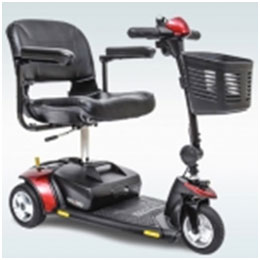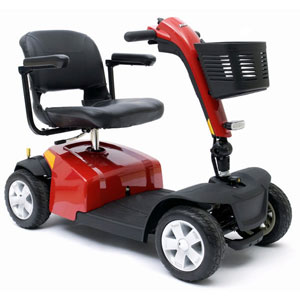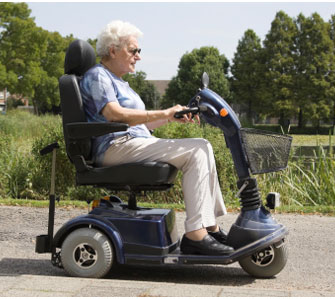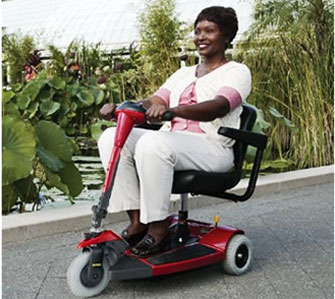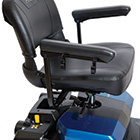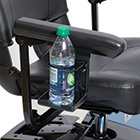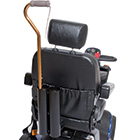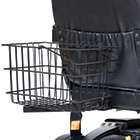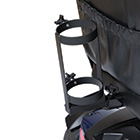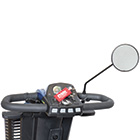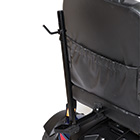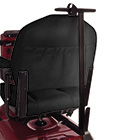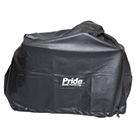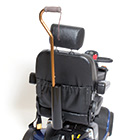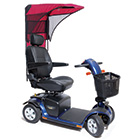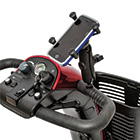ACCESSABILITY HOME MEDICAL PRODUCTS Offers Power Mobility Scooters, Power Chairs, Rental Power Mobility Scooters, Medical Equipment, Medical Supplies and more for Southeast Wisconsin, Milwaukee and surrounding areas.
Call us Today at (844) 837-2869

Power Mobility Scooters For Southeast Wisconsin, Milwaukee Area
AccessAbility Home Medical Products proudly offers a wide selection of Power Mobility Scooters serving Southeast Wisconsin and the Milwaukee Area. From lightweight and portable to heavy-duty motorized scooters we have the perfect option to get you on the go and living independently. We proudly service the entire southeast Wisconsin Area.
Whether you are looking for superior indoor maneuverability or indoor/outdoor versatility, easy portability or maximum outdoor performance and speed, we can help you choose the right scooter for your lifestyle.
We offer both 3-wheel and 4-wheel models and carry an assortment of accessories to make your ride an enjoyable one. Cup holders, cane holders, front and rear baskets and rear-view mirrors are just a few of the accessories that you can choose from.
Some Examples Of The Power Mobility Scooters We Carry
Please note that all products shown below are just a representation of what we have available in our accessibility stores. Some products may require special ordering, and we have specialists available at all store locations to assist you with finding the perfect mobility scooter to suit your taste and needs. Power Mobility Scooters sales are private pay only.


Your Ticket to Ride a new Scooter from ACCESS ABILITY Home Medical
Are you ready for the ride of your life? Hop aboard one of Golden’s four lines of scooters from ACCESS ABILITY, and discover a new-found sense of freedom. One of our models will give you the right combination of size, weight, portability and accessories. All provide the industry’s highest levels of stability, dependability, performance and comfort.
Golden takes all the worry out of purchasing a scooter. Our skilled designers blend the most technically advanced components with superior designs to provide you with the utmost in quality, comfort, style and performance. We confidently stand behind all our products and provide you with the best warranties in the industry. Choose the scooter that all others are measured against… choose Golden!
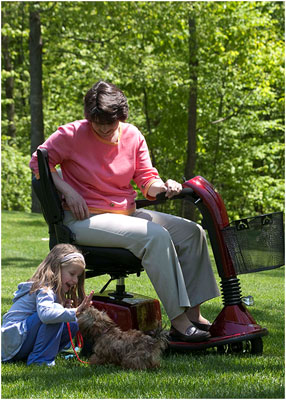
Choose the perfect Heavy Duty Scooters from ACCESS ABILITY
MODEL: GA541
The Golden Avenger — a four-wheel, heavy-duty scooter — provides an impressive blend of rugged outdoor maneuverability while giving a smooth, comfortable ride over a variety of nature’s most challenging terrains. Durable and stylish, the Avenger includes a standard front basket, a full lighting package and an extra roomy seat with an adjustable headrest. If power is what you need, look no further than the Avenger. Featuring a 500 lb. weight capacity, the Avenger uses two NF-22 batteries that provide a range of up to 18 miles between charges.
Full Product Details
- Handsome, Heavy-Duty Scooter
- Outdoor Ruggedness
- Speeds Up to 7MPH
- Full Lighting Package
- Standard Front Basket
- Extra Roomy Seat
- Oversized Tires
- Swivel Seat
- Flip-Up Armrests for Easy Transfers
- Adjustable Seat Height
- Bumper Guard Protection
- Arms Adjust in Width and Height
- Weight Capacity: 500 lbs
- Model Number: GA541
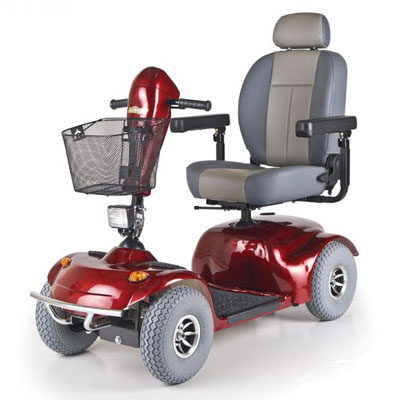
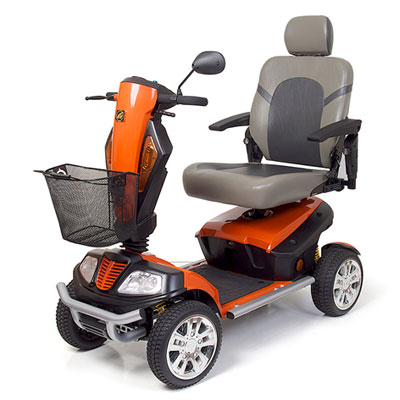
MODEL: GR575
If you’re looking for the ultimate POV for the great outdoors, the Golden Patriot should fit the bill! The Golden Patriot has more standard features for greater comfort and a higher level of performance. With its four-wheel, independent suspension, full lighting package and off road accessories, the Golden Patriot is sure to take you on many adventures!
Full Product Details
- Four-wheel independent suspension
- 400 lb. weight capacity
- Top speed 8mph
- Maximum range 18 miles
- Ground clearance 3.5”
- Available in Red and Orange
- Full lighting package
- Off road package standard
- Two cold liquid bottle holders standard
- Infinitely adjustable tiller
- Model Number: GR575
MODEL: GB107
This Buzzaround LTscooter from ACCESS ABILITY Home Medical Products is the smallest, lightest, and most portable Buzzaround scooter, however, it has a weight capacity of 300 lbs. and increased foot room. The new Buzz LT also has a charger port in the delta tiller, a new hard plastic rugged basket, updated black wheels and a plush, padded seat. Additionally, the Buzz LT comes with a lifetime warranty on the frame, a two-year warranty on the drive train and electronics, and comes standard with a one-year warranty on the batteries. Enjoy its tight indoor maneuverability and smooth outdoor use with 3″ of ground clearance!
Full Product Details
- Delta Tiller with Wraparound Handles
- 300 lb. weight capacity
- 4 mph max speed
- Charging port below the control panel
- 3″ inch ground clearance
- Availabile In Red Only
- Disassembles quickly and easily for transport
- LED Battery Gauge
- Easy Disassembly
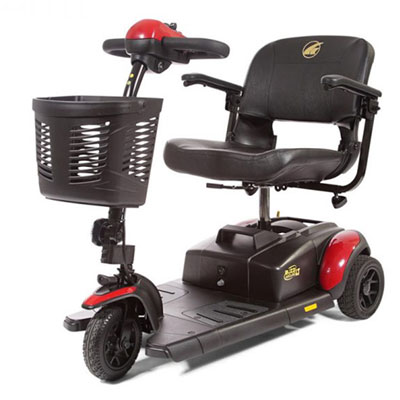
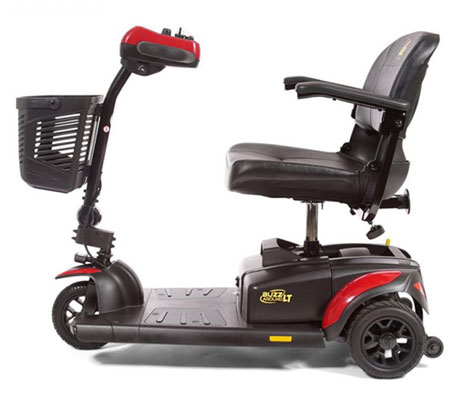

MODEL: GB117Z, GB147Z
The Buzzaround XLS-HD offers more standard features to make your riding experience better than ever. Featuring a wraparound Delta Tiller, a new LED battery gauge, and a new ultra bright LED angle-adjustable headlight, the new Buzzaround XLS-HD is also longer to offer more foot room, with a great turning radius. The Buzzaround XLS-HD disassembles in seconds with just 4 easy steps making transporting it from one destination to another a breeze!
Full Product Details
ALL BUZZAROUND XLS-HD MODELS FEATURE:
- Increased weight capacity up to 325 lb.
- 22 Amp hour batteries standard
- Operating range up to 14 miles per charge
- NEW Comfort Spring Suspension for a smoother ride
- Ultra Bright LED headlight standard
- Charging port below the control panel
- 3 inch ground clearance
- Red and Blue Shroud panels included free
- Disassembles quickly and easily for transport
MODEL: GB117H, GB147H
The Buzzaround XL-HD offers more standard features to make your riding experience better than ever. Featuring a wraparound Delta Tiller, a new LED battery gauge, and a new ultra bright LED angle-adjustable headlight, the new Buzzaround XL-HD is also longer to offer more foot room, with a great turning radius. The Buzzaround XL-HD disassembles in seconds with just 4 easy steps making transporting it from one destination to another a breeze!
Full Product Details
ALL BUZZAROUND XL-HD FEATURES:
- Increased Weight capacities up to 325lbs
- 22Amp batteries standard
- Ultra Bright LED headlight standard
- Charging port below the control panel
- Red and Blue Shroud panels included free
- Disassembles quickly and easily for transport
- Operating range up to 14 miles per charge
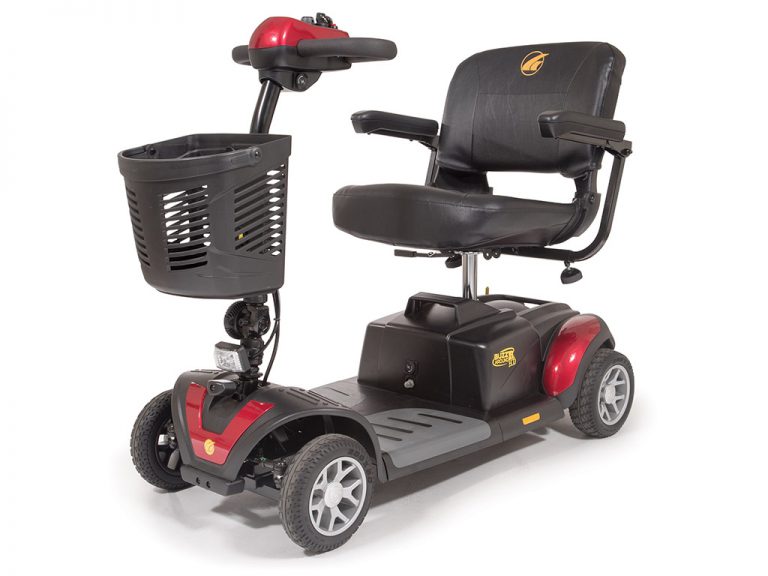
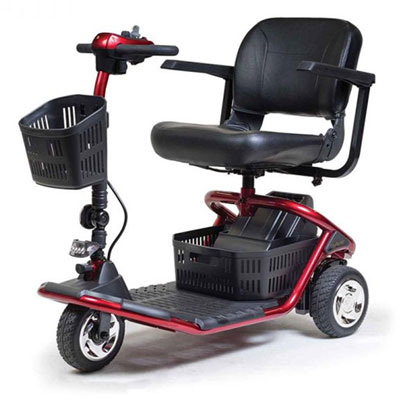
MODEL: GL111
The three-wheel LiteRider™ scooter by Golden from ACCESS ABILITY HomeMedicalfeatures better range, a Delta Tiller standard, more attractive styling and more vibrant colors. A modern tubular frame design supports its 300 lb. weight capacity and its completely wireless disassembly makes transporting a breeze. The LiteRider GL111’s 9-inch, black low-profile tires are mounted on high-strength steel rims with shiny hubcaps. Its plush, deep-black vinyl stadium style seat comes with adjustable armrests and a full 360-degree swivel mechanism for getting on and off the scooter easily. You will also appreciate our two storage baskets, one on the tiller and one under the seat. A true beauty, the LiteRider scooter is available in deep shades of red and blue.
Full Product Details
- 3 Wheels
- 300 lb. Weight Capacity
- 5 mph Top Speed
- Two 22AH Batteries
- Operating Range: Up to 12 Miles
- Delta Tiller, Standard
- Ultra Bright LED Adjustable Headlight
- Back-lit Battery Gauge
- Easy To Read Control Panel
- Two Storage Baskets
- Rugged Anti-Rust Steal Frame Tubing
- Available in Red or Blue
- Comfortable 17″x16″ Stadium Style Seat
- Adjustable Armrests
- Completely Wireless Disassembly
- 9″ Front and Rear Tires
- Low-profile, Black Tires on High-Strength Steel Rims with Stylish Wheel Covers
- Model Number: GL111
Compact and Portable Scooters from ACCESS ABILITY Home Medical
Offering tight indoor maneuverability, smooth outdoor performance, and a stylish modern design Golden’s popular compact Buzzaround scooter was made for you.
Offering weight capacities from 300 lb. up to 330 lb., a generous seat size and also wireless disassembly. Available in Red and Blue, the Buzzaround comes standard with a Delta tiller for easy steering, and a battery charging port is conveniently located on the tiller under the control panel.
Plus all models are backed by the best warranties in the industry!
MODEL: GA541
The Golden Avenger from ACCESS ABILITY Home Medicala four-wheel, heavy-duty scooter — provides an impressive blend of rugged outdoor maneuverability while giving a smooth, comfortable ride over a variety of nature’s most challenging terrains. Durable and stylish, the Avenger includes a standard front basket, a full lighting package and an extra roomy seat with an adjustable headrest. If power is what you need, look no further than the Avenger. Featuring a 500 lb. weight capacity, the Avenger uses two NF-22 batteries that provide a range of up to 18 miles between charges.
Full Product Details
- Handsome, Heavy-Duty Scooter
- Outdoor Ruggedness
- Speeds Up to 7MPH
- Full Lighting Package
- Standard Front Basket
- Extra Roomy Seat
- Oversized Tires
- Swivel Seat
- Flip-Up Armrests for Easy Transfers
- Adjustable Seat Height
- Bumper Guard Protection
- Arms Adjust in Width and Height
- Weight Capacity: 500 lbs
- Model Number: GA541
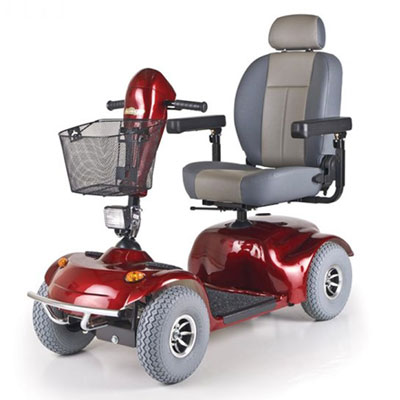
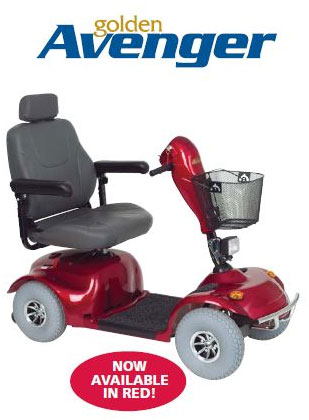

Call 414-486-6249 Today and ask about how ACCESS ABILITY Home Medical Products can help you ride in a new Golden technologies scooter today.
Or stop by for a FREE, No Obligation test drive Today.
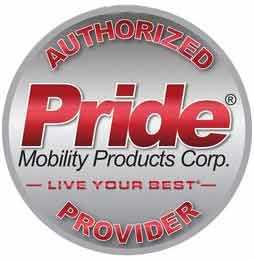
Ultra Lightweight Scooters
- Lighter weight scooters from 75 to 191 lbs. total weight
- 260 lb. weight capacity and traveling speeds up to 4 mph
- Frames disassemble easily for convenient transport and storage
- Availability in red or blue
Go-Go Elite Traveller Scooter
- Easy transport and tight-space maneuverability
- 260 lb. weight capacity and traveling speeds up to 4 mph
- Frames disassemble easily for convenient transport and storage
- Availability in different colors
Heavy-Weight Scooters
- 500 lb. weight capacity with heavy-duty drive train travels up to 5.25 mph
- Smooth and quiet riding indoors with plenty of stability for outdoors
- Full lighting package, comfortable seats and availability in red or blue
High Performance Scooters
- Combine the convenience of disassembly and easy transport with high performance speeds of up to 5.5 mph.
- Weight capacities up to 400 lbs. Available in red, blue and silver
Super High Performance Scooters
- Travel up to 8.25 mph with powerful drivetrain and large pneumatic tires for excellent outdoor performance
- 400 lb. weight capacity and deluxe reclining high-back seat
- Directional signals and lower headlight. Available in red, blue and silver
Mobility Scooter Videos
Why Pride Mobility Scooters?
There are many reasons Pride Mobility Scooters have helped make Pride the first name in mobility. Here are a just a few:

Pride In Performance
Pride Scooters are engineered and factory tested to provide you with consistent high performance operation that you can count on. Our high quality construction and proven durability means you can depend on it for a long time.
Elegant Style
Our scooters are designed to be a visually striking as they are high performing. Our sporty designs allow your scooter to be an extension of your unique personal style.
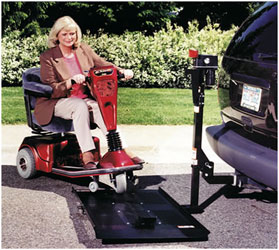
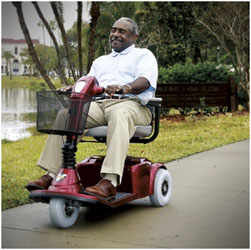
Easy Portability
Our scooters feature easy to use, state-of-the-art controls to make operation smooth and worry free.
Versatility
With many scooter models available and many accessories and options to choose from there’s a Pride Scooter that’s perfect for your needs.
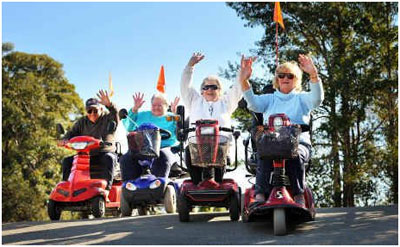
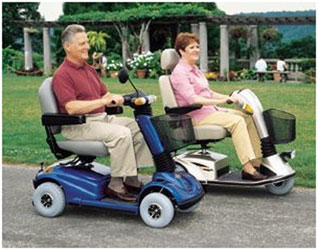
Easy Disassembly
Pride Scooters provide fast and simple disassembly. From our compact travel scooters to our larger luxury models, innovative design allow for convenient storage and easy transport.
Mobility Scooter Accessories
A wide selection of Pride Mobility Scooter accessories are available to personalize your Pride Mobility Scooter to better meet your needs and make it uniquely yours.
Maintaining Mobility
 By Carol Daus
By Carol Daus
Assistive equipment helps the geriatric population stay active and independent.
Today’s seniors have never been more on the go. Between postponing retirement and participating in sports and activities once relegated to the young, most people over the age of 65 are living much more active lives than their parents did. Given this trend, it is clear that mobility plays a critical role for the geriatric population. Yet by their 70s and 80s, many seniors develop certain disabilities or chronic medical conditions that can seriously impact their ability to stay active. Fortunately, because of advances in mobility aids, a wide array of products are available to help the elderly live as independently and actively as possible. In addition, a great number of resources from Web sites to funding programs can now help seniors in their quest for more fulfilling lives.
William Mann, PhD, OTR, FAOTA, chairman, program director, and professor of the occupational therapy department at the University of Buffalo and the director or the Center for Assistive Technology, Buffalo, NY, stresses that enormous advancements in assistive technology have not only made these products more safe and reliable for the elderly, they have also helped enhance mobility for many individuals.
Canes:
The cane is the most widely used assistive device, and in the United States alone, more than 4 million people use them. Canes support up to 25% of a person’s weight and may prevent falls. The two types of canes available are single-point canes and quad canes. A single-point cane provides minimal support during ambulation and is appropriate for people who have slightly decreased balance, poor endurance, poor coordination, or muscular weakness.
A quad cane is a cane with four points in contact with the ground. It is available with either a wide or small base. The quad cane is more stable than the single-point cane. People with significant muscle weakness in both the arm and leg on one side of the body, which often happens following a stroke or brain injury, may benefit from the use of a quad cane.
According to Mann, the different materials used in the shaft of the cane can change its weight and feel. Traditional wood is relatively heavy while aluminum is much lighter. “We are also seeing newer, lightweight materials like carbon fiber,” he says.
Walkers:
Almost 2 million people in the United States rely on walkers for their mobility needs. Since their introduction more than 200 years ago, walkers have changed dramatically. Originally designed as temporary rehab equipment, walkers have been modified for use in the home and features have been added like wheels, seats, and brakes, along with convenient accessories such as detachable baskets, trays, and walker bags.
Wheelchairs:
Wheelchairs are typically used by seniors with impaired mobility and reduced strength. Wheelchairs often become a necessity due to chronic conditions like arthritis, stroke, or a fractured hip. Today, older Americans use more wheelchairs than any other age group.
During the past 20 years, enormous changes have been made in wheelchair design and construction. “The sad part is that many people are not aware of all the different types of wheelchairs that are available because they end up purchasing one at their local drugstore, which has a limited supply, or a relative lends them one,” Mann says. “This is unfortunate since it may be set at the wrong height or is too heavy.” Poorly fitting chairs can cause bruises, pressure ulcers, poor posture, and other problems.
Laura Gitlin, PhD, director of community and home care, research division of the College of Health Professions, Thomas Jefferson University, Philadelphia, concurs that assistive equipment should not be purchased for an elderly patient without consultation from an occupational or physical therapist. “It is easier to make recommendations about equipment and safety concerns, but when it comes to making the actual choice of a particular piece of adaptive equipment, a rehab professional is necessary,” Gitlin says. “There are just too many variables between a patient’s diagnosis and individualized needs.” Matching the right piece of equipment to a person’s needs requires skilled intervention and an interdisciplinary approach.
Scooters:
Three-wheeled mobility systems, also known as scooters, are becoming increasingly popular among the elderly. Scooters are useful for individuals who can walk short distances but need help for long distances. Most scooters have rear wheel drive and front wheel steering. According to Mann, even though scooters have been around for a long time, they have undergone some of the biggest improvements. “The power of the batteries and the speed at which they recharge are the most important changes we have seen with this technology,” Mann says. Specifically, power seats, flip-back arms, adjustable bases, gear drive systems that provide 40 miles to a charge, and attractive colors are enhancements found in today’s scooters.
Many elderly patients like scooters since they provide a very comfortable ride because they absorb shock. Most can achieve speeds of up to four miles per hour. Scooters are steered with a handlebar, steering wheel, joystick, or push-button controls. Some scooters disassemble easily for transportation in the trunk of a vehicle. “The elderly particularly need to pay attention to how heavy a scooters is if they, or someone else, will have to lift it in and out of a car,” Mann says. “The best gauge is to determine if you can lift the largest, heaviest part when the chair is disassembled.”
Important Considerations:
Regardless of what type of assistive equipment an elderly patient needs, rehab professionals stress that there are a number of social and psychological issues that must be addressed to ensure that the equipment meets its objectives. “When a PT or OT first meets an elderly patient in the rehab environment, in many instances that represents the first time that individual has experienced an acute change in his health and functional status,” Gitlin says. “Whether it is a hip fracture, stroke or chronic condition, the rehab professional needs to be sensitive to the fact that the change in this patient’s health has great significance in how he redefines who he is and what he is capable of doing.”
Gitlin has also found in her research that assistive equipment has both positive and negative aspects for most geriatric patients. Obviously the positive aspect is that the equipment can help enable patients to live independently and resume functions that were performed before the change in health status. The negative is that the piece of equipment is symbolic of the fact that now there is a change in their health or function,” Gitlin says. The patient’s mixed emotions play an important tool in the rehabilitation process, and it is essential to address these feelings prior to the patient’s discharge.
Although Gitlin believes that many improvements have been made is assistive equipment, which has made the devices less intimidating for the elderly, she still believes that manufacturers should pay more attention to user needs and desires. She cites the case of a piece of assistive equipment a manufacturer gave her and her staff to evaluate. “We had our own opinions about the product, but what was most interesting was that when we shared it with potential users, they came up with 20 to 50 other recommendations that never would have occurred to us, since we personally do not have a need for the product,” Gitlin says.
Mann agrees that the best assistive equipment typically comes about when end users are involved in the research and development phase. With funding from the National Institute on Disability and Rehabilitation Research and the Administration on Aging, Mann established the first Rehabilitation Engineering Research Center (RERC) on Aging. One component of RERC’s research has been its consumer assessment study, which solicits information from individuals who use assistive devices. This study involves more than 300 home-based older persons and approximately 100 seniors living in nursing homes to learn how various equipment helps with functional tasks.
For many seniors who need assistive equipment, funding is a serious problem. Cuts in Medicare resulting from the Balanced Budget Act if 1997 have especially impacted the elderly. At the same time, research is starting to reveal how an investment in assistive equipment can actually lower health care costs in the long run. According to research conducted by Mann, if the frail elderly are given the mobility equipment they need, they end up suffering from fewer falls and also have fewer or shorter hospitalizations. “We also learned that when the elderly have assistive devices in the home, they develop more motivation and have a greater sense of control,” Mann says.
In an informal study, Gitlin studied the perceptions of low-income seniors who were given bathroom assistive equipment. Until then, they had never used this type of equipment in their homes. “The reported benefits were overwhelming,” Gitlin says. “They stated they needed less assistance from caregivers, could perform bathroom functions more independently, and felt a sense of normalcy and well-being,” she adds. The value of this type of research is that it clearly documents the real cost benefits of assistive technology.
One bright spot is that Congress in 1988 enacted the Technology-Related Assistance for Individuals for Disabilities Act, Public Law 100-407, also known as the Tech Bill. This law provides funding to each state to find ways to overcome barriers through the creation of statewide, consumer responsiveness systems.
Mann also points out that there are innovative programs designed to help the frail elderly obtain various assistive equipment even though they cannot afford it. San Francisco-based On Lok Senior Health Services, formed in response to community concern for frail elders, opened its first day health center in 1972. The program helps provide assistive equipment to low income seniors. In 1986, congressional legislation authorized On Lok to move beyond a demonstration project and achieve permanence as a model program. Additional legislation allowed On Lok to launch PACE, Program of All-inclusive Care for the Elderly, a nationwide effort to replicate On Lok’s model of care across the country.
The PACE model was signed into legislation by President Clinton in August 1997 as an option for all 50 states. Currently, 70 organizations in 30 states are in some phase of PACE development.
Loved That Cruise!
By Darryl Sigel
My wife Carolyn, who has a spinal cord injury, and I (along with her parents) took a seven-day cruise from Miami to St. Martin, St. John, St. Thomas and Norwegian Cruise Line’s (NCL) private island in the Bahamas on the SS Norway.
The Norway is a huge ship: She is 1,066 feet long and weighs 76,000 tons. There are nine elevators and 10 handicap rooms. We only saw our own cabin, and didn’t have a chance to view the other handicap cabins. But by cruise ship standards, ours was one huge cabin. Both the doorway to the cabin and the doorway to the bathroom were 31″. This cabin even had two bunk beds, so, it really was a cabin built for four people.
The Norway is sectioned off by six stair towers. One in the forward section, another midship, and one in the aft section. The Norway even has a wheelchair accessible bathroom in the common area, located on the pool deck.
You must use the tenders to go on shore, except in Miami. The Norway carries two tenders. Each tender can hold 450 passengers and six to eight wheelchairs, depending on the size of the wheelchair. A ramp leads from the ship to the tender. The tender crew did an outstanding job taking Carolyn down the ramp. They also took her off the tender when we reached our destination island.
NCL has a few wheelchairs at the private island that are made to travel in the sand. These wheelchairs can also go in the water, but, not deeper than six inches. The wheelchair user must have help as he/she cannot power this sand-going wheelchair.
Back on this ship on the Olympic Deck, 3.6 times around the deck equals one mile. Elevators and ramps make the Olympic Deck very accessible.
When going to the main dining room, we got off the elevator on the Atlantic Deck, and had level entry into the dining room.
Our cabin on the Norway had a bathtub and shower. Carolyn was able to transfer from her wheelchair to the tub without any assistance.
The Norway was built in 1962 and remodeled a few years ago. There were around 2,100 passengers on this cruise. We care looking forward to our next cruise on the SS Norway.

